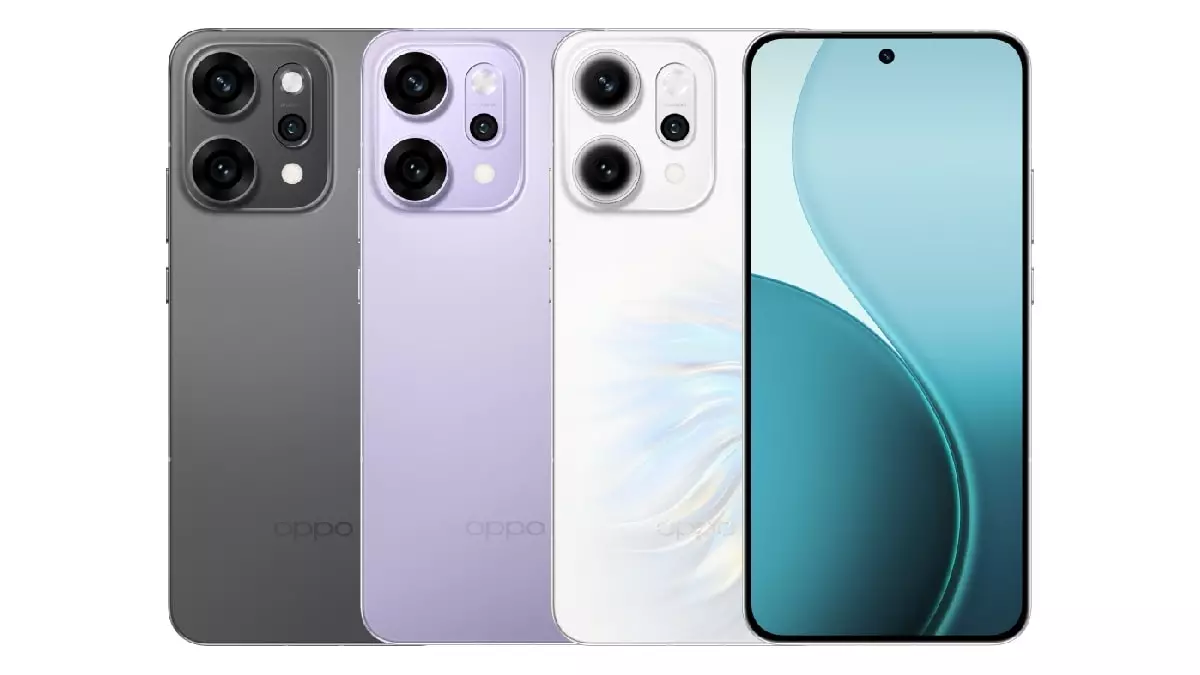The eagerly anticipated Oppo Reno 14 5G series arrives in India amid considerable fanfare, but the truth is that much of its allure is built on inflated marketing claims rather than genuine innovation. While Oppo markets these devices as cutting-edge, a closer examination reveals a pattern of incremental upgrades that hardly justify the hefty price tags. The series, composed of the Reno 14 5G and its more premium sibling, the Reno 14 Pro 5G, promises buzzwords like ‘AI features’ and ‘powerful cameras,’ but these are mostly superficial enhancements designed to distract consumers from the stagnation beneath. The launch event, streamed across social media platforms, is more about maintaining Oppo’s glossy image than delivering substantive advancements.
Design and Display: Slight Refinements, Not Revolution
The design language of the Oppo Reno series has always been sleek, aiming to appeal visually without groundbreaking innovation. The Reno 14’s Chinese variant sports a 6.59-inch flat OLED screen with a 120Hz refresh rate—hardly a leap forward when competitors have long surpassed this standard. The use of Oppo’s Crystal Shield Glass does offer durability, yet it falls into the category of expected premium features for a mid-tier flagship. The Pro model’s 6.83-inch display with similar specs might impress aesthetically but doesn’t challenge the status quo. Ultimately, the design feels safe rather than inspired, suggesting Oppo settling into its comfort zone rather than pushing technological boundaries.
Performance and Hardware: A Weak Excuse for the Price
On the performance front, Oppo’s reliance on MediaTek’s Dimensity chipsets underscores a troubling trend: the continued dependence on mid-range processors to power premium devices. The Reno 14 packs a Dimensity 8350, while the Pro version uses the somewhat more capable 8450. Although they support up to 16GB of RAM and substantial onboard storage, these specs don’t compare with the Snapdragon equivalents that dominate flagship markets. The choice of hardware suggests Oppo prioritizes cost-saving over genuine performance, diluting the premium feel consumers might expect. Additionally, putting a focus on RAM capacities that are excessive for most users hints at speculative overkill rather than real-world necessity.
Camera Capabilities: Overpromising, Under delivering
Camera specifications are often used as a primary selling point, and Oppo wields this weapon with vigor. The standard Reno 14’s triple-camera setup, featuring 50MP main, 8MP ultra-wide, and 50MP telephoto lenses, sounds impressive on paper; but actual photo sample tests reveal a mixed bag. The so-called ‘AI-backed features’ like AI Recompose and AI Style Transfer are more gimmicks than genuine improvements, often resulting in unnatural images rather than authentic creativity. The Pro model’s quad-camera setup with four 50MP sensors seems impressive initially, but the actual image quality and versatility share the same old story: plenty of megapixels, but lackluster low-light performance and inconsistent zoom quality. The 50MP selfie camera is an also-ran feature in a market saturated with other compelling options. Consumers deserve real innovation, not just increased pixel counts on paper.
Battery and Charging: Slightly Better, Still Not Enough
Battery capacity is another area where Oppo appears to be playing catch-up. The standard Reno 14 houses a 6,000mAh battery, and the Pro version bumps this to 6,200mAh—capabilities that are respectable but hardly thrilling in an age where fast charging, wireless charging, and energy efficiency are expected to be standard. The 80W wired fast-charging support on the Chinese variant is a decent feature, but as with other specifications, these are hardly groundbreaking. The actual user experience remains mediocre when the device’s core promise of longevity and quick recharge is merely an extension of existing standards rather than a bold leap forward.
Software and Value Proposition: A Lack of Substance
Oppo’s decision to ship the Reno 14 series with ColorOS 15 based on Android 15 gives it a contemporary software backbone. Yet, software in this segment is often more about adding unnecessary bloat or distracting animations than providing genuine value. Many of the AI features touted—referred to as ‘artificial intelligence’—are more like marketing buzzwords designed to make a mediocre hardware proposition appear innovative. The price point, estimated from Chinese markets, suggests a premium positioning that doesn’t match the device’s actual capabilities. Consumers are paying more for what is essentially a modest upgrade dressed up with superficial features, rather than a true technological breakthrough.
In making these observations, it’s evident that Oppo’s Reno 14 series is more about maintaining a shiny, marketable facade than delivering transformative technology. For a brand that has previously claimed to push boundaries, this release smacks of reactive updates and risk-averse design choices. It’s a cautionary tale of how smartphone companies often prioritize branding over genuine progress, leaving consumers with devices that are good enough but far from exceptional.

